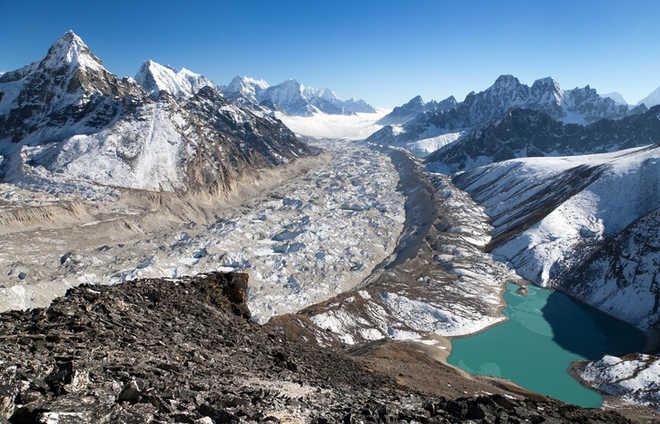Himalayan glaciers melting twice as fast: Study
| Date :08-Feb-2021 |

NEW DELHI :
Analysis spanning 40 years of satellite observations across India, China, Nepal and Bhutan indicates that climate change is eating the Himalayan glaciers
MELTING of Himalayan glaciers has doubled since the start of the 21st century due to rising temperatures, losing over a vertical foot and half of ice each year and potentially threatening water supply for hundreds of millions of people in countries, including India, according to a study published in 2019.
The analysis, spanning 40 years of satellite observations across India, China, Nepal and Bhutan, indicates that climate change is eating the Himalayan glaciers, researchers said. The study, published in the journal Science Advances in June 2019, shows that glaciers have been losing the equivalent of more than a vertical foot and half of ice each year since 2000 -- double the amount of melting that took place from 1975 to 2000. “This is the clearest picture yet of how fast Himalayan glaciers are melting over this time interval, and why,” said Joshua Maurer, a PhD candidate at Columbia University in the US. While not specifically calculated in the study, the glaciers may have lost as much as a quarter of their enormous mass over the last four decades, said Maurer, lead author of the study.
The study synthesised data from across the region, stretching from early satellite observations to the present. The data indicates that the melting is consistent in time and space, and that rising temperatures are to blame, the researchers said. Temperatures vary from place to place, but from 2000 to 2016 they have averaged one degree Celsius higher than those from 1975 to 2000, they said. Researchers analysed repeat satellite images of some 650 glaciers spanning 2,000 kilometres from west to east.
Many of the 20th-century observations came from declassified photographic images taken by US spy satellites. They created an automated system to turn these into three dimensional (3D) models that could show the changing elevations of glaciers over time. The researchers then compared these images with post-2000 optical data from more sophisticated satellites, which more directly convey elevation changes. They found that from 1975 to 2000, glaciers across the region lost an average of about 0.25 metres of ice each year in the face of slight warming.